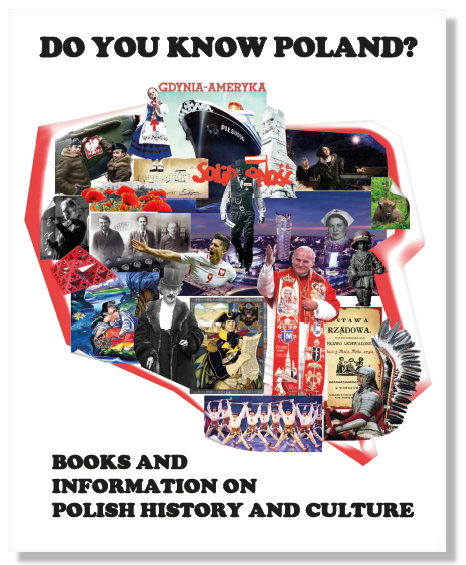Newsletter
2021 Remembering Września Children Strikes (1901-1903)
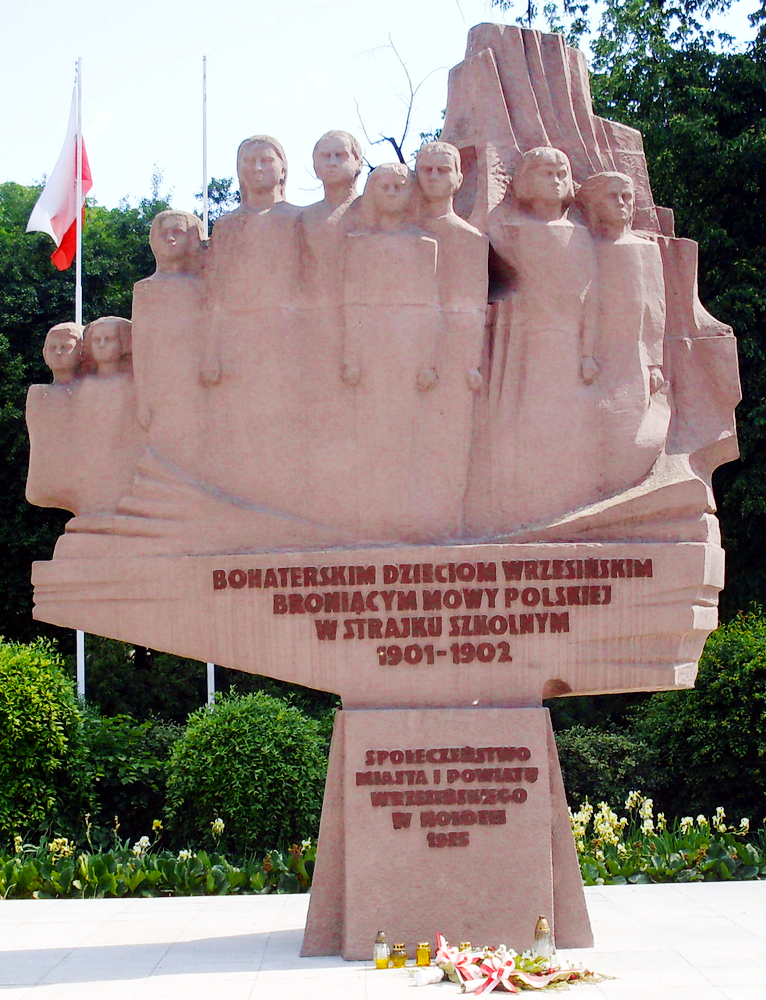 The main ceremony commemorating the 120 anniversary of the 1901-1903 wave of protests against elimination of Polish language in Polish schools took place at the Września Children Monument in Września, Poland
The main ceremony commemorating the 120 anniversary of the 1901-1903 wave of protests against elimination of Polish language in Polish schools took place at the Września Children Monument in Września, Poland
Public domain via Wikipedia Commons
Września Children Strikes
Fighting for the Right to Speak Polish
Irena Frączek
After centuries of quiet obscurity, a little town of Września in west-central Poland, suddenly started making headlines across the world. The year was 1901, a cause célèbre was a group of brave Polish children rebelling against the ban on using Polish language in Prussian schools – ultimately throwing an unforgiving spotlight on the abhorrent and ruthless nature of germanization policies in the Prussian partition of Poland.
Września is located in Greater Poland (Wielkopolska), about 30 miles south-east of Poznań, and 15 miles south of Gniezno, two historically Polish cities vying for the title of the first capital of Poland. The Gniezno and Poznań region fell under the Prussian rule in 1793, in the course of second partition of Poland (ending also the short life of May 3 Constitution enacted in 1791).
From Prussian perspective, Polish inhabitants of the annexed area stood in the way of German eastward expansion (Drang nach Osten), a medieval idea that German nationalists eagerly embraced in the 19th century Prussian Kingdom. The main strategies for doing away with the obstacles on their course was eradication of Polish land ownership and unrelenting suppression of Polish culture and religion (Kulturkampf).
Step by step, Poles and Polish language were being removed from administration, courts, cultural institutions and academia. In secondary and elementary schools, restrictions on teaching in Polish were gradually introduced in the increasing groups of subjects and by 1873, only religion could be taught in Polish. Then in March 1901, a mandatory switch to German was ordered.
In Września’s Catholic People’s School (Katolicka Szkoła Ludowa), implementation of the new rule began with the arrival of re-printed catechisms on April 1. Yet children declined to accept the books and refused to speak German in religion classes. Children were disciplined by spending time in isolation rooms but facing an implacable defiance, unscrupulous German teachers turned to caning. On May 15, a town meeting with prominent politicians was held and a solemn note of disapproval was sent to the authorities. Then the situation escalated to the explosive level just five days later.
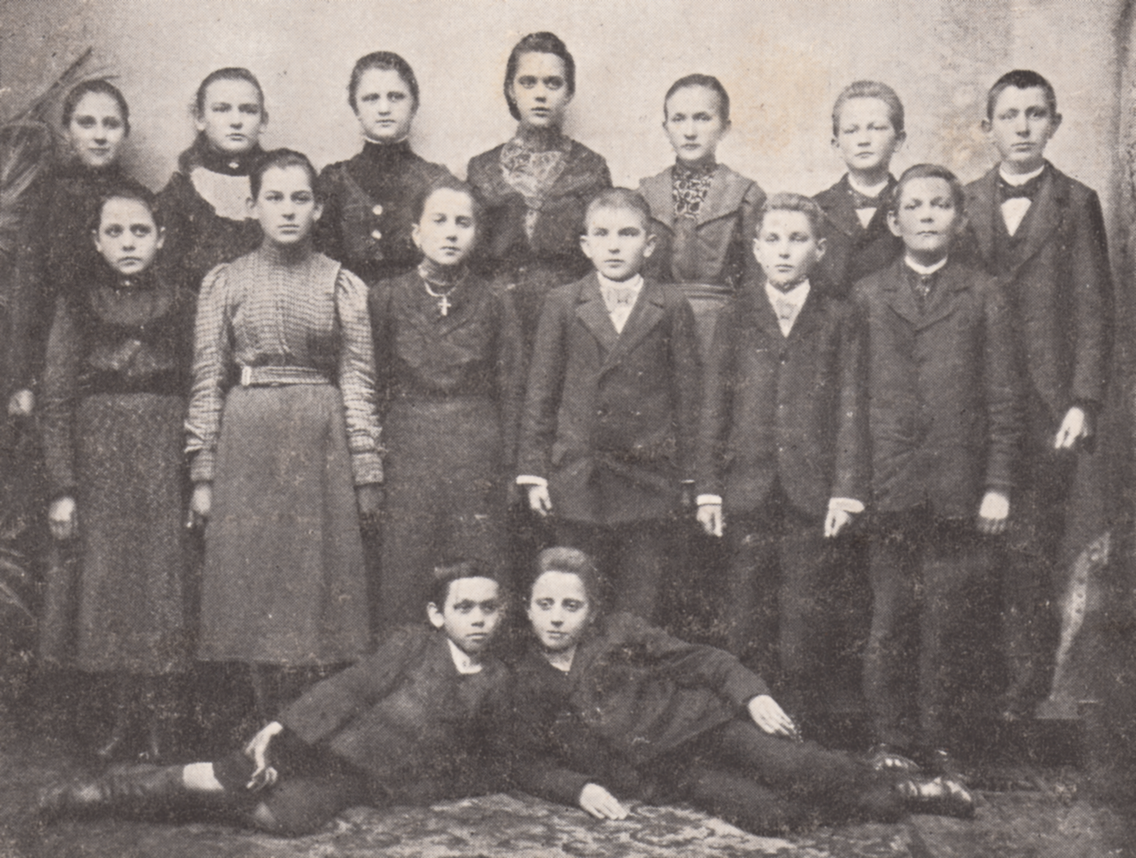 Szymon Furmanek’s photo of children striking in Września. Due to high demand and orders arriving from all partitions in Poland and from abroad, the photo was reproduced on postcards. Children striking in Września sent some of the postcard to other schools as invitations to join the strikes) Public domain via Wikipedia Commons
Szymon Furmanek’s photo of children striking in Września. Due to high demand and orders arriving from all partitions in Poland and from abroad, the photo was reproduced on postcards. Children striking in Września sent some of the postcard to other schools as invitations to join the strikes) Public domain via Wikipedia Commons
On May 20, the teachers subjected 14 students to prolonged beating. Hearing the screams of children flogged inside, desperate parents and other concerned citizens tried to enter the school to stop the brutality. The school called police to disperse the crowd and in the aftermath, 26 adults were put on trial for public disturbance, rebellion, interference with public duties and criminal offences against the state. The so-called “Gniezno trial” ended on November 19, 1901 with sentences of imprisonment for 20 defendants ranging from 2 months to 2.5 years. The harshest penalty went to the impoverished woman taking care of her 7 children and elderly mother.
Despite the inconceivable hardship for the defendant’s families, the Leipzig tribunal upheld the ruling on April 12, 1902. The most defiant children were forced to stay in school for one year longer than required by law. The authorities also went after the committees organizing aid to the affected families. New court cases were filed against a school physician who certified the seriousness of children injuries and other witnesses testifying earlier for the defense. Even the local photographer Szymon Furmanek was sentenced to 40 days in jail for taking just three pictures of people involved in the drama. Two other people were slapped with lesser sentences for storing and distributing the photos.
Despite the trials, continuing use of corporal punishment and other repressions, children strikes spread to larger areas. They started waning after amnesty was declared in 1903, yet the last holdouts held tight until the summer of 1904. A new wave of strikes in 1905 engulfed about 800 schools in Poznań and Bydgoszcz regions. The last surge of strikes took place in years 1906-1907 with participation reaching 75,000 students. But it was the spark of Września, where 159 children rebelled at the peak of activities, that left the deepest trace in the history of those events.
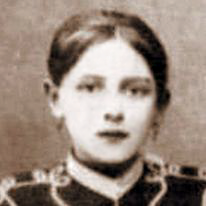
WISCONSIN WRZEŚNIA
connection
Tekla Dembiński (née Tomaszewska), one of the children striking in Września, came to Wisconsin in 1909.
She was born into a very patriotic Września family on September 12, 1888. Under the care of her father, Andrzej Tomaszewski, secret meetings took place in their home for her siblings and friends to learn Polish language and history. When Tekla began coming home late because she was detained in “school arrest” after classes and her hands started showing signs of beeting to the blood, her father joined other parents writing complaints to the authorities. Around Easter 1902, despite the death of her mother, she was ordered to stay in school for one extra year. By the fall 1902, she was one of the only two students still subjected to this punishment (another was Bronisława Śmidowicz, generally viewed as the strike leader).
Tekla came to the United States to join two of her older siblings*. On August 7, 1912 she married Tomasz Dembiński and focused her life on raising the family of 4 children. Following her death in Racine on January 17, 1978, she was buried in Saint Adalbert Cemetery w Milwaukee.
On January 14, 2021, a delegation of Polish government officials and Polonia activists placed flowers on Tekla’s grave to mark the 120 anniversary of Września strike (see David Rydzewski’s report from the event). But more needs to be done to preserve the memory of those historic events. For the immediate consideration, the inscription on Tekla’s gravestone has worn away and her resting place distinguishes itself as the only unmarked and decrepit grave in this section of the cemetery.
*Two of Tekla’s brothers made big contributions to the history of Poland and American Polonia. Franciszek Ksawery Tomaszewski (1881-1976) was a Polish journalist working in Chicago, Milwaukee and Detroit. Active in many Polish organizations, he was awarded the General Haller Swords Medal for recruiting volunteer soldiers to Haller’s Blue Army. Aleksander Tomaszewski (1891-1970) studied medicine in Berlin University but spend his life in military. Among numerous decorations, he received a Silver Cross of the Virtuti Militari (1922) for fighting in the Soviet-Polish war and British Defense Medal and War Medal 1939-1945.
The Września children strikes quickly gained widespread attention in partitioned Poland and across the world. Support for the children, parents and their defenders was overwhelming. This was true even for the heavily censored newspapers in Russian partition, where Poles were subjected to similarly relentless russification.
As it could be expected, German newspapers followed two different paths. In general, Social Democrats opposed the germanization policies on Polish lands, while nationalists defended them staunchly. The latter slant went on display in late 1901, when celebrated pianist Ignacy Jan Paderewski was booed and boycotted after declaring that proceeds from his concert in Germany will go to aid the Września victims. Needless to say, Paderewski refused to perform in Germany.
In Europe, the strongest reactions were linked to other great Poles. Soon after the Gniezno verdict, Henryk Sienkewicz (1846-1916), the word-famous grandmaster of Polish language and 1905 Nobel prize winner, condemned its flagrant injustice in an open letter to the German emperor. The letter was reprinted in British press along the articles brimming with contempt for the Prussian anti-Polish policies.
On the other hand, Maria Konopnicka (1842-1910), the greatest Polish female poet and writer of the time, and a soul acutely sensitive to the suffering of children, worked tirelessly to publicize Września events during her prolonged stays in Italy. In response, about 120,000 Italians signed petition condemning the atrocities perpetrated on Polish children by Prussian teachers. Konopnicka also wrote the vastly popular poem “About Września” and the memory of those events echoes in Konopnicka’s “Rota.” Viewed by some as a candidate for Polish anthem, it is one of the most important songs ever written in Poland.
American Polonia quickly became aware of Września events as well. Published alongside the emotionally charged appeal “to Polish mothers” penned by Henryk Sienkiewicz, the first reports in Polish-language press appeared in June 1901. The response of Polish-Americans was spectacular. Numerous organizations called their members to action. Almost immediately petitions started to circulate and organized protests began taking place in town halls and parishes of many major and smaller American cities. They peaked in January 1902 and according to some estimates, demonstrations in Chicago area gathered around 25,000 Poles and their supporters on just one day (January 26) alone.
These actions helped the Polish cause in more ways than one. Thousands of dollars collected to aid the children and their imprisoned defenders notwithstanding, the extent of oppression that Poles suffered in the partitioned Poland was most vividly brought to the attention of general public and the media. For individual Polish Americans, it was a chance to realize the strength of their spiritual connection to the ancestral homeland and native language. And for Polonia in general, an opportunity to experience the empowerment that arises from the organizational unity and the potency of symbols that conjure sympathy and support for Polish causes, while exposingy the true image of ruthless perpetrators.
Let’s pause and reflect on the significance of those historic events on their 120 anniversary.
Further readings in English:
Stewart Dowell: The children who were flogged to within an inch of their lives for refusing to pray in German
Stanisław A. Blejwas: American Polonia and the School Strike in Września
2021 May 3 Constitution Day
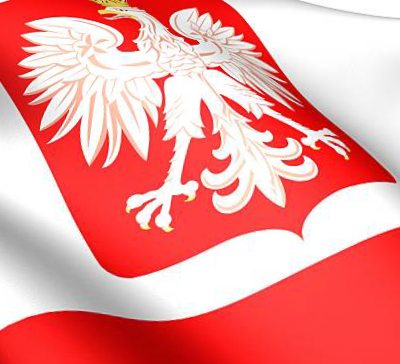
POLISH CONSTITUTION DAY
Polish Flag Day and Day of Polonia
Celebratory events held in Chicago this year spread over several days (click here for the full program) and some events can be attended virtually this year:
May 1 at 10:30 am – historical show by ensemble POLONIA streamed live from the Chicago’s St. Ferdinand Church.
May 1 at 11:30 am – Virtual POLISH PARADE under the John Paul II motto “Do Not Be Afraid.”
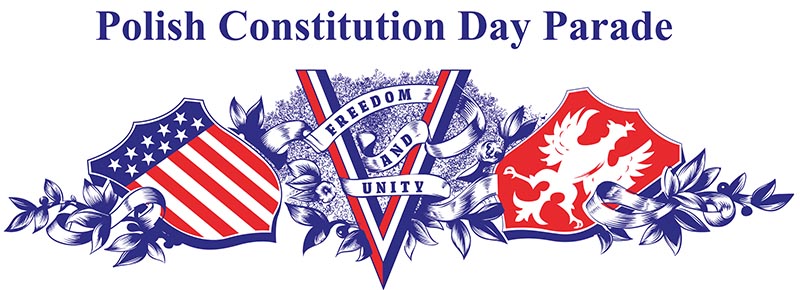
May 2 at 10 am – Solemn Mass in the Holy Trinity Polish Mission.
May 3 at 6 pm – virtual program with some of the most notable writers connected to Chicago: Thomas Dyja, John Guzlowski, Stuart Dybek, and Dominic Pacyga.”
2021 DYKP Contest Winners and Answers
░D░o░░y░o░u░ ░k░n░o░w░
░P░O░L░A░N░D░?░
To download the booklet, click on the image above or on the red text below
► download the booklet here ◄
DYKP Contest Winners
“If you don’t know history, then you don’t know anything. You are a leaf that doesn’t know it’s part of a tree.”
Michael Crichton
This quote began the DYKP contest announcement on our website and in the national PAC newsletter. The contest challenged all to test their knowledge of Polish heritage by identifying images on the new cover of the “Do You Know Poland?” booklet. Now the joyous time has come to declare the winners and they are:
RALPH TYKSINSKI
Polish Heritage Club of Wisconsin-Madison
ANNA KOCHANOWSKI
Polish American Congress – WI Division
Polish Heritage Awareness Society in Stevens Point
Congratulations to Ralph and Anna, for their incredible knowledge of Poland, it’s history and heritage – as well as the gusto with which they rose to the challenge.
We hope that DO YOU KNOW POLAND? booklet will inspire many others to use the resources it contains to begin or continue their pursuit of discovery, learning and appreciation for Poland and its people. In either case, a good starting point is a walk through map images as described below by the map author, Irena Frączek.
► download the description of images here ◄
1. Pilots of No. 306 Polish Fighter Squadron “Torunian” (pl: 306 Dywizjon Myśliwski “Toruński”), one of over a dozen Polish squadrons in the Royal Air Force (RAF) during the WWII. Flight Lieutenants Tadeusz Czerwiński and Stanisław Skalski are photographed with Polish emblem in Churchstanton, Somerset, UK. on January 26-28, 1942.
2. A girl in the Kashubian folk costume photographed during the Polish Fest in Milwaukee. Kashubians (an indigenous Slavic population) live near the Baltic Sea in the eastern part of Pomerania. Kashubian dialect is related to Polish but classified as a distinct language. Almost 90% of Kashubians see themselves as simultaneously Kashubian and Polish.
3. Rare autograph of Frédéric Chopin (1810-1849) against a few measures of his widely known Polonaise in A-flat Major “Heroique” Op. 53. A musical celebrity and symbol of the Romantic era, his compositions are permeated with influences from Polish folk music and remain as popular around the world as ever. Polonaise (pl. polonez) is a national dance of Poland.
4. Named after Marshal Józef Piłsudski, the ocean liner MS Piłsudski (an older sister ship to the famous MS Batory) was a tribute to the country’s leader and his role in the long struggle for Poland’s independence regained in 1918. The ship’s home port in Gdynia embodies the achievements and entrepreneurial spirit of the II Polish Republic, while service on the transatlantic route evokes numerous Polish-American connections.
5. The Westerplatte Monument (officially named the Monument to the Defenders of the Coast) commemorates the first battle of WWII that came to symbolize the war outbreak and the heroic Polish resistance against the Nazi Germany. In this battle, lasting for seven days, about 200 Polish soldiers bravely withheld attacks of 3,400 German forces supported by a battleship, torpedo boats and military aircrafts.
6. A true Renaissance man, Nicolaus Copernicus (pl. Mikołaj Kopernik) placed sun in the center of his heliocentric model of the universe. His book ‘On the Revolutions of the Heavenly Spheres’ triggered the Copernican Revolution that gave rise to modern science. Jan Matejko, a painter known for capturing the most profound moments of Polish history, created the painting “Astronomer Copernicus, or Conversations with God” adopted on the map.
7. The Białowieża Forest is the second oldest of 23 Polish national parks, and the only UNESCO-designated natural World Heritage site in Poland. It protects the last remnant of Europe’s primeval forests and the largest population of European bison (pl. żubr). Polish kings started to protect the European bison already in the 16th century, but by the 20th century, the species had to be back brought from near extinction by conservation efforts.
8. Skyline of Warsaw, Poland with a good view on the city’s seventh tallest building (630 feet, 192 m) – a luxury residential skyscraper located at Złota 44 and nicknamed the “Glass Sail.”
9. Irene Sendler was a nurse and social worker who with help of her underground network and at great personal danger rescued about 2,5000 Jewish children from the Warsaw Ghetto. In October 1943, she became a head of children’s section of Żegota (the Polish Council to Aid Jews, pl. Rada Pomocy Żydom), the only organization in German-occupied Europe that was established specifically to save Jews. Her wartime activities brought Irene Sendler numerous awards and Yad Vashem’s recognition as the “Righteous Among the Nations.”
10.The Little Insurrectionist (pl. Mały Powstaniec) monument in Warsaw commemorates the youngest fighters of the Warsaw Uprising (August 1 – October 2, 1944), the single largest military effort taken by any European resistance movement during World War II.
11. A very progressive for its time, the Polish Constitution of May 3, 1791 was the first modern written constitution in Europe, and only the second in the world after the Constitution of the United States. It remained in effect for just one year, becoming later a cherished national symbol that helped to keep alive the aspirations for Poland’s independence and social justice.
12.The winged hussars, also called the Polish hussars, were the elite branch of heavy cavalry in the Polish–Lithuanian Commonwealth from the 1570s until 1776. Using a tactic of charge at and through the enemy, they won numerous battles – even against the overwhelming odds. They won some of the most important battles in the history of Poland (the Battle of Chocim, 1673) and Europe (the Battle of Vienna, 1683).
13. “Zbójnicki,” a traditional dance of Gorals (pl. górale), highlanders from the mountainous Podhale region in Southern Poland, performed by Śląsk Song and Dance Ensemble..
14. Pope John Paul II during his first papal visit to Poland in 1979. The red stole was a gift from the Pauline Friars taking care of the Jasna Góra Monastery, one of the most important Marian shrines in the world. The painting of Black Madonna held in the monastery and portrayed on the stole has been an important part of Poland’s history for over six hundred years.
15.Tadeusz Kościuszko is the national hero of the United States (the Revolutionary War), Poland and Lithuania. The 1938 painting by Arthur Szyk recalls Kosciuszko’s legacy as defender of freedom, justice and equality for all. It also revisits his unfulfilled wish for Thomas Jefferson to execute his last will stipulating the use of all Kosciuszko’s assets to buy out black slaves and provide them with education needed to make a fresh start in life..
16. Ignacy Jan Paderewski was a virtuoso pianists and composer admired in concert halls all over the world. He used his fame to advance the cause of restoring Poland’s independence – especially when having an ear of the US President Woodrow Wilson. The power of his word was so great that the victorious Greater Poland uprising (1918–1919) broke out just one day after his patriotic speech in Poznań. What a joy it must have been for him to place his signature on the Versailles Treaty recognizing the Poland’s hard-won independence in 1918..
17. Most people have seen Zofia Stryjeńska‘s art but not many know her name. Yet she earned the title of the “princess of Polish art” in interwar Poland (and fame in Europe) for her art deco designs and effervescent images. Her work revolved around pagan rituals, pre-Christian Slavic deities, historic themes, as well as Polish folk costumes, dances & traditions – just like the Polish custom of floating wreaths and candles on St. John’s Eve (pl. Noc Świętojańska). Zofia Stryjeńska was among the artists invited to work on the MS Piłsudski interior design.
18. Sierpiński triangle became my choice of an eye catching and hard to forget symbol of the astounding achievements of the Polish School of Mathematics to put on the map. Growing rapidly in the interwar period, its three branches bloomed simultaneously in Warsaw, Lwów and Kraków. Interestingly enough, Wacław Sierpiński applied his math genius to breaking Soviet codes, thus contributing to Poland’s victory in the Polish-Soviet war (1919-21).
19. Another triumph of Polish cryptologists came when Marian Rejewski, Henryk Zygalski, and Jerzy Różycki developed a method for breaking German codes generated by the Enigma machine in December 1932. After Poles disclosed their secrets to the Allies in 1939, British code-breakers gradually started deciphering German communications. But only after Poland joined NATO in 1999, they began acknowledge the Polish role in those successes.
20. One of the greatest scientists of all times, Marie Skłodowska Curie, she developed the theory of radioactivity and discovered new elements: polonium (named after Poland) and radium. Despite multiple barriers on her path (poverty, misogyny and xenophobia), she became the first women ever to win a Nobel Prize, the first person to win it twice and the first in two separate disciplines (Physics in 1903 and Chemistry in 1911).
21. Red poppy might be a national flower of Poland but on this map, it represent the blood of Polish soldiers shed on the slopes of Monte Cassino in one of the fiercest battles of WWII. The Polish II Corps ended it launching one of the final assaults in the four month long struggle. On May 18, 1944, Polish flag was raised over the ruins of Monte Cassino Abbey (seen on the map behind the poppies), followed by the British Union Jack. “The Red Poppies on Monte Cassino” (pl. Czerwone maki na Monte Cassino) is one of the best-known songs in Poland.
22. Straight from the 1952 film “High Noon,” Gary Cooper walks in this poster with the Solidarity badge on his chest and a ballot in his right hand. Used to put the Solidarity movement on the map, the poster urged people to vote in the pivotal 1989 election. The result was a landslide victory for Solidarity and a major step in the collapse of communism.
23. Robert Lewandowski is a captain of the Polish National Soccer team and one of the best players in the Bundesliga history (where he plays for Bayern Munich). Widely considered to be one of the best strikers in the world, he recently won the 2020 Best FIFA Men’s Player Award and the 2020 UEFA Men’s Player of the Year Award. On March 22, 2021, Polish President Andrzej Duda awarded Lewandowski the Commander’s Cross of the Order of Polonia Restituta for his professional achievements and promotion of Poland abroad.
2021 DYKP CONTEST EXTENDED and CASIMIR PULASKI DAY
DYKP contest extended through
March 28th, 2021
░D░o░░y░o░u░ ░k░n░o░w░
░P░O░L░A░N░D░?░
The contest challenges all to give their knowledge of Polish heritage a test by identifying images on the new cover of the “Do You Know Poland?” booklet.
► download the booklet here ◄
More information about the contest
and detailed submission rules are
► available for download here ◄
along with a reprint of PAC_WI President’s introduction of the contest
in the national PAC newsletter.
CASIMIR PULASKI DAY
First Monday of March
in Wisconsin and Illinois
The memory of General Casimir Pulaski (pl: Generał Kazimierz Pułaski), a national hero of the United States and Poland, is celebrated in different parts of America on various dates throughout the year.
The federal observance of General Pulaski Memorial Day was established in 1929 by the joint resolution of Congress to take place on October 11th (the day of Pulaski’s death during the siege of Savannah in 1779). Since that year, every President of the United States has annually issued a related proclamation (1930 was the only exception). For Polish Americans living on the East Coast, the magnificent Pulaski Day Parade on Fifth Avenue in New York City is the highlight of related celebrations, coinciding with the Polish Heritage Month. With an exception of 1942 and 2020, the parade took place every year since 1937.
A smaller, yet equally vibrant and filled with Polish pride, parade is held in Bufallo, NY on Pulaski Day observed in mid-July. But the string of Pulaski events begins every year in Wisconsin and Illinois with the Casimir Pulaski Day observed on the first Monday of March in memory of Pulaski’s birthday in 1745. The laws establishing this commemoration were enacted in 1977 (Illinois) and 1987 (Wisconsin). In 2021, March 1st was the exact date of the Casimir Pulaski Day and on this occasion, the story featured below is certain to help us reflect on and revere Pulaski’s life and achievements.
RECALLING A GREAT
POLISH AND AMERICAN PATRIOT
October 11, 2020 marks the 241 th Anniversary of the death of General Kazimierz Pulaski, best known in America as Casimir Pulaski.
Pulaski was born on March 4, 1747 in Warka, Poland into a staunchly patriotic, gentry family. Having completed his education in legal and military studies he became engaged in 1768 in a patriotic movement created in the eastern Polish town of Bar, a movement that became known as the Confederation of Bar. The movement aimed at reversing Poland’s long slide into subservience to imperial Russia
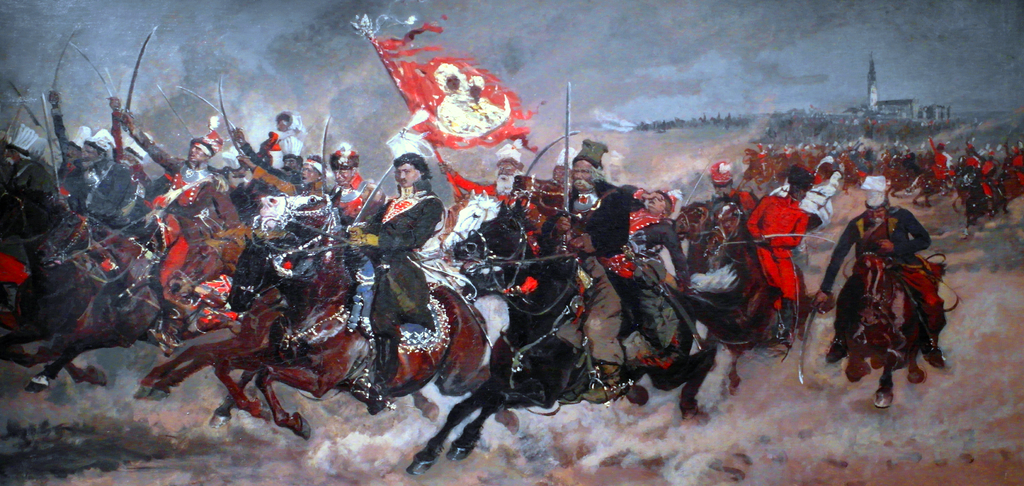 Kazimierz Pułaski at Częstochowa during Bar Confederation, painting by Józef Chełmoński (1849-1914) Public domain via Wikipedia Commons
Kazimierz Pułaski at Częstochowa during Bar Confederation, painting by Józef Chełmoński (1849-1914) Public domain via Wikipedia Commons
Between 1768 and 1772, Pulaski distinguished himself in a series of cavalry battles against the Russian army that entered his unhappy land to put down the revolt. In 1771 he heroically defended Czestochowa from an attack by a much larger Russian force. His victory there is immortalized in Jozef Chelmonski’s painting, “Pulaski at Czestochowa.” But when Russia crushed the Confederation, Pulaski was forced into exile, first in Turkey then in France.
In France, Pulaski learned of the American colonies’ declaration of independence. Making his way to Paris, he met Benjamin Franklin, the emissary to France of the newly formed American government. There he volunteered his services to the independence cause. Franklin was much impressed by Pulaski; in his letter introducing him to his compatriots in America he described Pulaski as “an officer famous throughout Europe for his bravery and conduct in defense of the liberties of his country.”
Following his arrival in America, Pulaski was given a commission as a cavalry officer by the Continental Congress. Not long after, he played a key role at the battle of Brandywine in leading his men in protecting General George Washington’s forces from being overtaken and possibly destroyed by the British army. His actions won his promotion to the rank of Brigadier General with the responsibility of organizing all mounted troops in the land. Thus, he is rightly recognized as the “father of the American Cavalry.”
Later, Pulaski organized and financed his own legion, a force of 268 men, which fought with great courage and success for the independence cause. The banner flown by his men in battle became famous and was remembered years later in Henry Wadsworth Longfellow’s stirring poem, “The Hymn of the Moravian Nuns.”
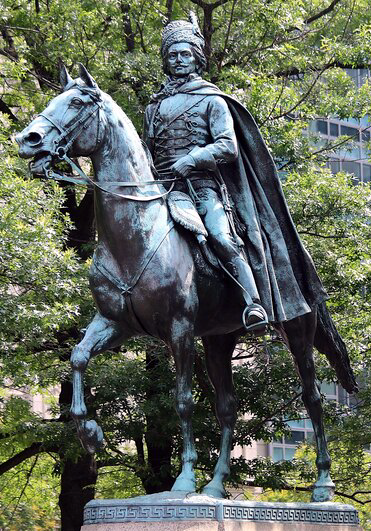 Kazimierz Pułaski statue in Washington D.C.
Kazimierz Pułaski statue in Washington D.C.
Public domain via Wikipedia Commons
Sent south to the Carolinas, Pulaski’s legion successfully defended Charlestown from the British. He and his men then took part in a French-American attack aimed at recapturing the town of Savannah, Georgia.
There on October 11, 1779 Pulaski was mortally wounded leading his men in a charge on the British entrenchments. His death was mourned throughout the colonies. Indeed, the Continental Congress approved a resolution to erect a monument in honor of his devotion to the American independence cause.
Over a century later, a monument to him was erected and at the government’s expense in Washington, D.C. It was dedicated by the President of the United States, William Howard Taft, on May 11, 1910, along with a second monument to his countryman and fellow patriot, Tadeusz Kosciuszko. (That monument was funded by the Polish National Alliance as a “gift to the American people.”)
Indeed, there are scores of other memorials to Pulaski. They include Fort Pulaski near Savannah. Pulaski monuments are in five states. And six counties and twenty towns are named after Pulaski, as are a number of streets, including Pulaski Road in Chicago.
In 1929, the 150th anniversary of his death, President Herbert Hoover proclaimed Pulaski Day as a Day of Observance throughout the country. On November 6, 2009 President Barack Obama signed legislation approved by Congress making Pulaski a citizen of the United States. (March 4, the day of Pulaski’s birth, is also formally recognized in the states of Illinois and Wisconsin.)
For many years Pulaski’s remains were believed to have been placed aboard an American warship after the battle and buried at sea. But thanks to the research of Polonia activist Edward Pinkowski, it has been shown that Pulaski’s remains lie under the monument in his honor in Savannah.
The remarkable Kazimierz Pulaski is remembered today as a dedicated fighter for freedom – both for his homeland and America – and one who gave his very life to the American independence cause. He, like his compatriot Tadeusz Kosciuszko, along with the famed Polish Constitution of the May the Third, 1791, have come to symbolize the unbreakable solidarity of values that unite the freedom loving peoples of Poland and the United States of America.
Donald Pienkos with thanks to Drs Francis Kajencki of Texas and Angela Pienkos of Wisconsin for their research on Pulaski.
Archived Posts
- 2025 Polish Independence Day / Veterans Day invitation
- 2025 Millennium Lecture
- 2025 Millennium Concert
- 2025 Wianki Festival
- 2025 Remembering Katyń Massacre (1940) and Smolensk Tragedy (2010)
- 2024 Independence Day and Veteran Day invitation
- 80th Anniversary of the 1944 Warsaw Uprising
- 2024 Wianki Festival
- 2024 Polish Constitution Day in Wisconsin
- 2023 Merry Christmas
- 2023 Lighting the Light of Freedom on Dec 13 at 7:30pm
- Independence Day and Veteran Day invitation
- 2023 Wianki Festival
- 2023 May 3rd Constitution Day Celebration
- 2023 Lecture on Polish Borders by Prof. Don Pienkos
- 2023 REMEMBER THIS: Jan Karski movie premieres on PBS Wisconsin
- 2023 Upcoming lectures in the Polish Center of Wisconsin
- 2022 Polish National Independence Day
- 2022 Independence and Veteran Day Luncheon (invitation)
- 2022 Wianki, Polish Celebration of Noc Świętojańska (St. John’s Night)
- Celebrating Constitution of May 3, 1791 in Polish Center of Wisconsin
- 2022 Polish Constitution Day, Polish Flag Day and the Day of Polonia
- 2022 March Bulletin
- 2022 Polonia For Ukraine Donations
- 2022 Polish American Congress Condemns Russian Invasion of Ukraine
- 2022 PAC-WI State Division Letters to WI Senators and Representatives
- 2021 Polish Christmas Carols
- 2021 Panel Discussion: Martial Law in Poland 1981-1983 (REPORT)
- 2021 Panel Discussion: Martial Law. Poland 1981-1983 (invitation)
- 2021 Solidarity: Underground Publishing and Martial Law 1981-1983
- 2021 Polish Independence Day and Veterans Day
- 2021 Polish Independence Day and Veterans Day Luncheon
- 2021 Prof. Pienkos lecture: Polish Vote in US Presidential Elections
- 2021 POLISH HERITAGE MONTH EVENTS
- 2021 “Freedom” Monument Unveiled in Stevens Point, Wisconsin
- 2021 PCW Picnic and Fair
- 2021 Remembering Września Children Strikes (1901-1903)
- 2021 May 3 Constitution Day
- 2021 DYKP Contest Winners and Answers
- 2021 DYKP CONTEST EXTENDED and CASIMIR PULASKI DAY
- 2021 February announcements
- 2021 Polish Ministry of Education and Science oficials visit Wisconsin
- 2021 DYKP Contest, KF Gallery and Dr. Pease lectures
- 2020 Help Enact Resolution commemorating the 80th Anniversary of the Katyn Massacre
- 2020 Independence And Veterans Day
- 2020 Remembering Paderewski
- 2020 POLISH HERITAGE MONTH
- 2020 Solidarity born 40 years ago
- 2020 Battle of Warsaw Centenary
- 2020 The Warsaw Rising Remembrance
- 2020 June/July News: Polish Elections, Polish Films Online and more
- 2020 Poland: Virtual Tours
- Centennial of John Paul II’s Birth
- 2020 Celebrating Polish Flag, Polonia and Constitution of May 3rd
- 2020 Polish Easter Traditions
- 2020 Census and Annual Election
- Flavor of Poland (Update 3)
- 2020 Copernicus, Banach & Enigma talk
- 2020 Do You Know Poland and other announcements
| M | T | W | T | F | S | S |
|---|---|---|---|---|---|---|
| « Oct | ||||||
| 1 | 2 | 3 | 4 | 5 | 6 | 7 |
| 8 | 9 | 10 | 11 | 12 | 13 | 14 |
| 15 | 16 | 17 | 18 | 19 | 20 | 21 |
| 22 | 23 | 24 | 25 | 26 | 27 | 28 |
| 29 | 30 | 31 | ||||



